8 Best B2B SaaS Marketing Channels for Startups
34 new startups joined Crunchbase’s “Stable of Unicorns” only in May 2022. Is your unicorn going to win the race and be next? Discover the perfect mix of B2B marketing channels that’ll help you crush your business goals and make your startup a raging success
Software as a service (SaaS) has become one of the hottest industries in the world. Venture capital (VC) investments in U.S. SaaS startups are skyrocketing, jumping more than 150% year-over-year from 2020 to 2021. The amount of Google searches for SaaS startups is growing exponentially, like Linktree, a social media management tool that’s enjoying a whopping 8,100% five-year search global search rate growth.
All this sounds like music to any SaaS startup entrepreneur’s ears. But what about your business? Is your startup getting a slice of this booming success? Do you have a great, innovative product or service but you don’t know how to tell the world about it?
Discover the best b2b SaaS marketing channels that you should be tapping into to make your marketing strategy shine, even on a limited budget. Disrupt the industry by leveraging the power of the greatest and latest tricks. Get your SaaS startup where you want it to be without a hitch.
8 Best B2B SaaS Marketing Channels for Startups
1. Build the best product/service ever: tick.
2. Create a winning marketing strategy: tick.
3. Find ways to get your product/service out there without breaking the bank: to do.
You’ve now reached the hardest part of your startup journey: How do you spread the word about your product/service? Through marketing channels, of course! These are the magical tools and platforms that’ll help you overcome the barrier between you and your potential buyers. They’re the ones that’ll enable your startup to take your amazing products/services to market, fast and effectively.
But with so many marketing channels to choose from and a limited budget and time, which ones should you pick? Ding! The bell has just rung, the starter has opened the gates, and the race is on! Let’s find out the best B2B SaaS marketing channels that’ll help you win the startup race.
Too busy winning the race? Explore our summary table to save time!
| B2B SaaS Marketing Channels | Examples |
|---|---|
| 1. Websites and Blogs |
|
| 2. Videos |
|
| 3. Social Media |
|
| 4. Third-Party App Marketplaces |
|
| 5. Search: Organic and Paid |
|
| 6. Software and App Listings |
|
| 7. Partner Programs and Value Added Resellers |
|
| 8. Marketing Events and Competitions |
|
1. Websites and Blogs
Based on Hubspot’s 2021 “Not Another State of Marketing Report,” websites and blogs are the second most popular and effective b2b marketing channels. Let’s have a look at their benefits.
Websites
SaaS companies are known for their innovative products and services, for being ability to disrupt the market, and for their unique product vision. Does your website reflect all that? If your answer is no, you may need to do some adjustments. At the end of the day, your site is your business card; it’s likely the first thing that potential buyers see. Get it wrong and they will quickly move on to a competitor.
So, how can you improve it and make your company stand out?
- Make it interactive. Enable your customers to communicate and interact with your website instead of letting them just read and view images. Features like
- Videos,
- Animations,
- 3D effects,
- Quizzes, and
- Interactive feedback tools.
will make your website much more interesting, flexible, and innovative. An interactive website boosts engagement and attracts viewers. It’ll also enable you to learn more about your customers based on their interactions and behaviors while on your site. Do you want a couple of examples? Check out Nike React’s website and the screenshot below from Apple’s Accessibility website.

- Use gifographics. In other words, add animated gifs to your website that help capture users’ attention. It’ll make your content stand out from those of your competitors and bring your data to life. How? Replace static, boring statistics with cool animations like QuickSprout did. Create eye-catching and memorable visuals to describe or demonstrate a process or product or simplify complex information. It’s fun and it’ll catch your viewers’ attention.
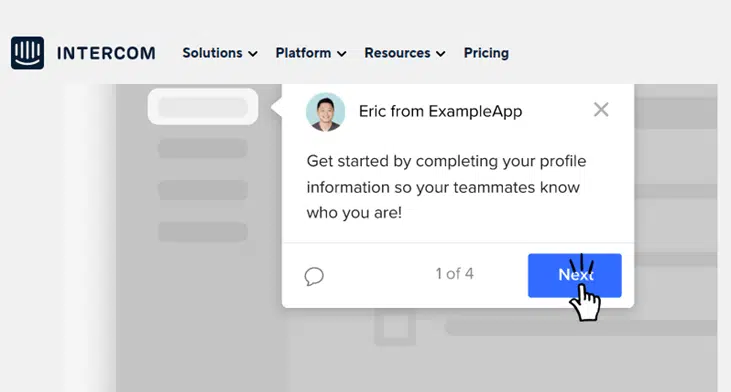
- Make it safer. With digital transformation and cloud migration accelerating, companies are putting cybersecurity in the spotlight. 55% of organizations that responded to PWC’s Global Digital Trust Insights 2021 survey are planning to increase their cybersecurity budget. Show your customers your website and their data are secure by:
- Encrypting all your website traffic. Get a website security certificate (i.e., secure socket layer/transport layer security [SSL/TLS] certificate) to secure communication between the client and the server. Your customers will immediately notice it by the closed padlock icon that’ll appear on their browser’s address bar and the fact that your website’s URL will start with HTTPS instead than HTTP. This will also help you stay compliant with data security and privacy regulations like the EU’s General Data Protection Regulation (GDPR) and the U.S.’s California Consumer Privacy Act (CCPA).

- Using a client authentication certificate. Enable your customers to safely log in to your website by ensuring that only authorized users can access it. The certificate (i.e., your digital ID) will enable your users to establish a secure, encrypted connection using public key infrastructure (PKI) for authentication to verify their identity.
Blogs
Working hand in hand with your website, a blog will help you get your brand known, drive traffic to your website, and establish your new startup as a trusted source of information. How? In addition to the points listed above (a blog at the end of the day is also a website), you should:
- Research the right keywords. Do you want to make sure to drive traffic to your blog and website? Find out the topics that your personas are interested in by doing some keyword research. Are you selling a SaaS communication and messaging tool? You may want to search for terms related to secure messaging, for example, to see what ranks and tailor your content to match search intent.
- Diversify your content. Don’t write only about your products/services. Talk about topics that you can relate to them using backlinks. Are you selling customer service software? Publish industry-related statistics and talk about customers’ pain points. Don’t focus on articles only — also be sure to create other types of valuable content, including:
- Guides,
- Infographics,
- Ebooks, and
- Podcasts.

- Show that security matters for you. Nowadays, cybersecurity is a hot topic that everyone’s concerned about. Give your customers tips on how to protect their data, teach them how to check files for viruses before downloading them, or talk to them about encryption. Don’t overdo it, though. As a SaaS startup, security should be an important talking point you talk about, but it doesn’t have to be the only focus of all your blog posts. Be subtle by briefly mentioning it here and there without taking away from the focus of the topics your audience is interested in.
What About Costs?
Building an interesting and innovative website doesn’t have to cost you a fortune. There are many free tools around that you can tap into. For gifographics you can check out websites like:
- Wofox,
- Giphy, or
- Gifographics
If you can’t afford a top-shelf digital certificate like the extended validation one, you can always opt for the cheaper domain validation SSL/TLS certificate, but then you sacrifice your site’s digital identity. (Maybe consider an organization validation SSL/TLS certificate instead.)
Do you need a free keyword research tool? Google’s keyword planner or Ubersuggest are a couple of examples.
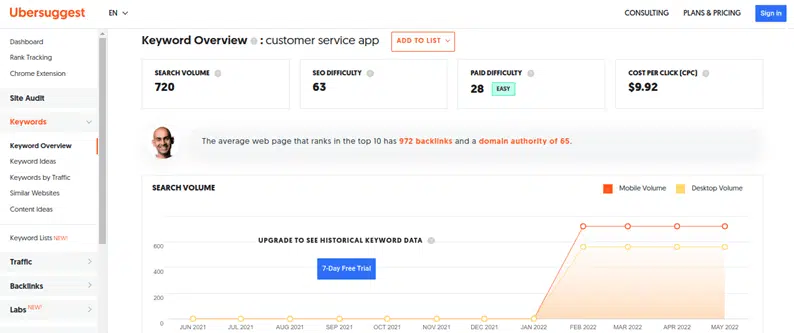
2. Videos
Establish a relationship with your potential customers: use videos to present your SaaS products/services, and your brand and show a more personal side of your startup. To be successful ensure that:
Your Short Videos Are Embedded in Your Blog
Don’t post your videos only on social media or video channels like YouTube. Include them in your blog and website. Write a couple of sentences on top and you’re done.
Create How-To Videos
Generate more leads by teaching your customers new things related to your industry or products and services. Do you have an FAQs page? Take it to the next level including videos answering your buyer’s frequently asked questions as Hubspot did.
Meet the Team
You’re a startup that’s new to the market. Get friendly, give a face to your company, and introduce your team to the world as
You don’t fancy doing a video? Then add your team’s faces to your website. It’s a great way to introduce your team and put a friendly face to your business to help create relationships and stand out from the competition.

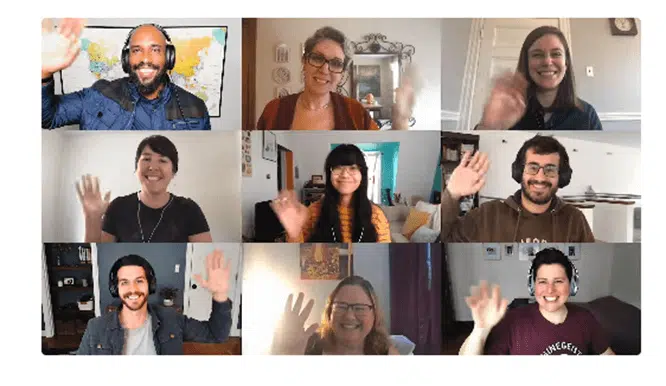
What About Costs?
Let’s have a look at a bunch of free tools that can help you create videos. Among them, there are:
You’ll also need a webcam and a microphone, but if you have a laptop, you can quickly get it sorted without breaking the bank.
3. Social Media
Who doesn’t use at least one social media platform? Virtually no one. OK, probably my 93 years old grannie and a few other people living in the middle of nowhere. LinkedIn, Facebook, Instagram, you name it — they’re all platforms with huge numbers of active users who are hungry for new, exciting content. Get your startup out there and get ready to meet your potential buyers where they’re hanging out by doing the following:
Select the Right Platforms
Don’t add your profile to just any social media platform available on earth. You’ll waste precious time and resources for little gain. Refine your choices instead and be selective. The personas you’ve built will guide you identify the most relevant social media for your SaaS startup.
Use Content to Inspire Action
Post helpful information, leverage the tools and tips highlighted in the previous points, and listen to your followers. Establish a relationship with your audience that’ll lead them to sign up for a demo or a free trial.
Ask Questions and Use Calls to Action
Ask your followers open-ended questions to encourage discussion and get feedback. A question like “What do you think about…?” can help you promote your product/service, learn what your customers want, and get feedback on new features. Don’t forget to use calls to action (CTAs) buttons.
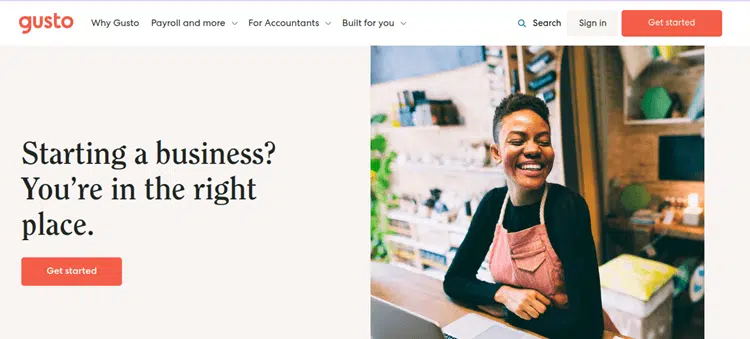
What About Costs?
With social media, costs can vary greatly from zero to thousands of dollars, depending on how you use them. All platforms give you the possibility to publish your content for free (e.g., short posts, links to your blog and website) which for a start, it’s perfectly fine. However, if you don’t have a talented marketing team or content writer you may have to pay for one. If you want to invest a bit of money to boost click rates, you can also opt for paid advertisements. We’ll talk more about it in a bit.
4. Third-Party App Marketplaces
Get easily found by your ideal customers through third-party app stores. What’s a b2b SaaS app store? It’s a platform where buyers interested in b2b SaaS products go to find new goodies. Be where your customers are instead of investing money and resources in looking for them. Before you do that though:
Understand Which App Stores Are Right for Your Startup
Start with checking out as many app marketplaces as you can. Base your analysis on your personas, your products, and your competitors. Find out how the app stores you selected work, check reviews, and their communities. Take advantage of interactive tours like the ones offered by Salesforce App Exchange.
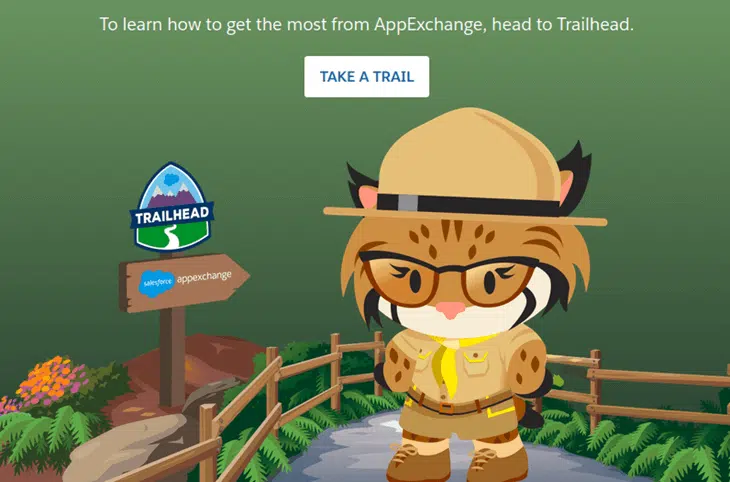
Sign Your Software
Did you know that several app stores and software platforms like Apple and Google PlayStore are only accepting software or apps that are signed with their organization’s certificate? Furthermore, many businesses now use Windows Defender Application Control (WDAC) to restrict the types of software and code that can be executed on their workstations by creating WDAC policies.
Ensure you always sign your codes, even if aren’t required by the marketplace you picked. How? Use your own code signing certificate. When you apply a digital signature to your software, your code will be secure and you’ll be able to make it also available to download directly from your website, killing two birds with one stone. You’ll gain customer trust, boost the number of downloads and increase your startup’s revenue.

Choose Trusted, Well-Known Platforms
“It’s always been a matter of trust,” says one of Billy Joel’s songs. That statement also rings true in business. Potential customers will always end up browsing the platforms they know and trust. Would you buy the latest laptop model on a website you don’t know or trust? I don’t think so. In addition, app stores like Shopify for example offer additional security to the users by validating each app before publishing it and requesting the authors to comply with strict rules.
What About Costs?
OK, here you’ll have to fork out some money to buy a code signing certificate. But compared to the benefits you’ll receive, it will likely be worth it. Maybe you won’t grow $7 million as Weglot did, but it’ll definitely help your startup to get some new customers and much-needed cash flow. Usually, app stores charge you an annual fee or registration fee and take a percentage based on your sales.
To have a better idea, have a look at some well-known b2b SaaS platforms:
5. Search: Organic and Paid
Make it easy for your potential customers to find you by improving your website and blogs to get a higher ranking in search engines. We’ve already talked about keywords; now, let’s find out other ways to boost your online ranking presence.
Use Competitive Research
Are your competitors always using the same keywords? Be different and don’t use them. Remember that you’re a startup, trying to compete with fully established companies is going to be very challenging. Find other appropriate, long-tail, less used keywords. It’ll boost your ranking in search results and get you some customers. It’ll also help you build content clusters that can help you establish domain authority as well.
Are there tools available to help you with this? Of course. We’ll get there in a minute.
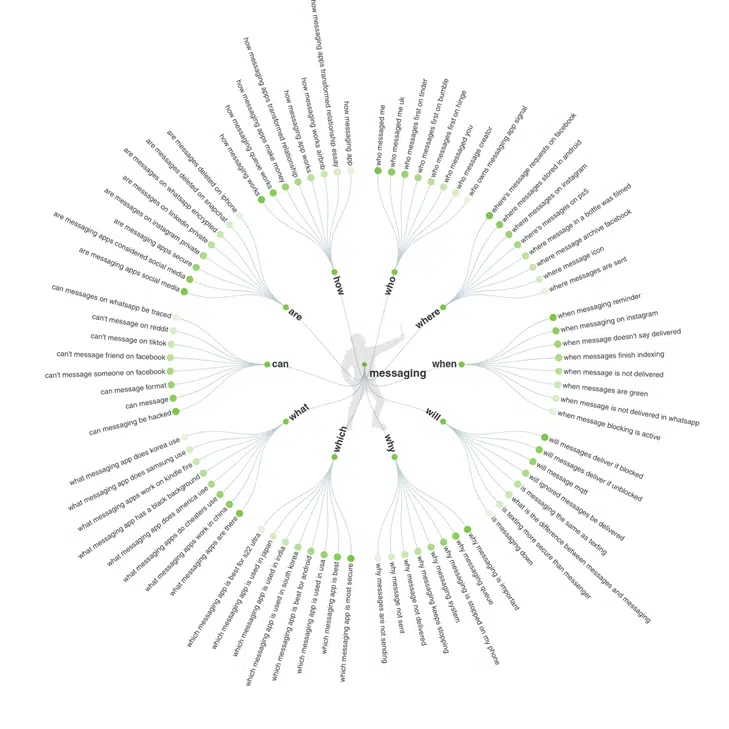
Try Programmatic Search Engine Optimization (SEO)
Generate a landing page for each precise search term (do you remember when we talked about free tools that can help you identify the most powerful keywords?) that potential buyers may use to find your product or service. It’ll enable you to capture traffic searching for that keyword or specific answers.
Include a Mix of Organic and Paid Search in Your Strategy
Did you know that search engines like Google have two types of results? Paid and organic. What’s the difference other than one costs money and the other one is free?
- Organic search results
- Are crawled by search engine spiders.
- Can’t be bought or influenced by advertisers.
- They’re the results considered the most relevant to a specific search query.
- Paid search results.
- Can be expensive, depending on the platform.
- Can take months to generate a steady flow of traffic.
- Can be used with pay-per-click campaigns.
What About Costs?
If you decided to do competitive research or know more about your competition you can do your search for free using tools like:
Regarding search, having an SEO expert in your team will save you some money. Pay-per-click advertising could also be a cheaper option in case you can’t afford to splurge on a proper paid search plan.
6. Software and App Listings
Similar to app marketplaces, software and app listing sites are the Yellow Pages of SaaS products and services. Let’s explore some examples of what these types of sites entail.
General Software and App Listings
You don’t have enough money to invest in SEO-paid search? Pick a couple of SaaS directory websites (no more than that or you’ll lose track of them) and get highly targeted traffic to your website. Don’t forget to post updates on new features and product launches. Ask customers to write a review. Do you want a few examples?
- SaaSGenius,
- SaaSHub, or
- DiscoverCloud.
Local Listings
Want to go local and network with local companies too? Use local listings if they’re available in your city/region. You’ll get less (but more targeted) traffic, but you’ll increase your credibility and get to know similar companies operating in your area. Building relationships can be very valuable for a startup, above all if you are looking to leverage a b2b SaaS marketing channel like a partnership. Interested? Hang on, we’ll talk about it in the next point.
What About Costs?
App and software listing websites usually offer free and paid listings. Start with a free directory listing as a test. If you get good results and you’re willing to invest some money in it, you can always move to a paid plan later.
7. Partner Programs and Value-Added Resellers
Partner programs and resellers: two different programs that, if used wisely, can add extra gear to your startup and win more customers. But what are they? How do they work?
Partnerships
Do you know Girls Who Code? It’s a tech-based charity focusing on the inclusion of women in tech jobs. They’re supported by companies like Apple, IBM, Microsoft, and many more. Customers are increasingly interested in buying from businesses supporting a good cause or doing something for their communities. Pick a good cause, find your partner, get your team involved, and boost your image. You don’t even need money to do it. Donate your time, participate in an event, and organize a free course related to your industry.

Value-Added Resellers (VARs)
Get somebody else to do the “dirty” work. The VARs will buy the software/service from you and resell it bundling it with some sort of add-on (e.g., dedicated customer service, discounts on onboarding fees). Why are they useful and can attract more customers? Let’s say an organization is looking to buy software from you but it’s unable to find a package meeting its needs. A VAR can customize the software exactly to its specific requirements without you having to spend money and time on something that some customers won’t buy.
VARs can also be useful when:
- Customers want different payment terms to those offered by your company.
- Customers want to customize the product’s look, feel, or functionalities.
- Customers need to get the contract in a particular currency not supported by your company or payment vendors.
What About Costs?
VARs will receive commissions and you may also have to invest some time and resources in training. You’ll have to spend some money, but sometimes VARs will let you reach an untapped pool of customers that otherwise you’d be unable to get in touch with.
8. Marketing Events and Competitions
These latest b2b SaaS marketing channels are usually the most appreciated by startups and customers alike. Why?
Marketing Events
Working in a startup can be hard sometimes. But participating in industry-specific events around the world like the Messaging, Malware and Mobile Anti-Abuse Working Group (M3AAWG), SaastrAnnual, or Tech Toronto, will add a note of fun to your challenging daily routine. At those kinds of events, you’ll:
- Meet fellows in your industry or in the SaaS startup world,
- Learn some precious tricks and tips from more navigated entrepreneurs, and
- Tap into CEOs’ and SaaS founders’ knowledge (check the speakers list for that!).
Competitions
Don’t you just love competitions and quizzes? At one of the companies I worked for, every Christmas customers could win small gadgets with the company’s logo by answering a short quiz. As a result, the organization learned more about its audience, won new customers, got more traffic to its website and the winners were happier than ever.
You can also give out branded mugs, pens, or t-shirts for free to the first 10 customers buying your new product or service. Or organize a raffle. Too difficult or time consuming? You can always use tools like the following:
What About Costs?
OK, I get it. Paying for a plane ticket and a few nights in a hotel isn’t a good idea for a cash-strapped startup. Don’t despair, though! Look for local events or participate in online meetups and virtual gatherings. What about giveaways and competitions? Many tools have free plans and you can get a variety of gadgets with your brand logo on them for a few dollars. In exchange, you’ll get free advertising and happier customers.
Final Thoughts on 8 Best B2B SaaS Marketing Channels for Startups
Choosing the right b2b SaaS marketing channels for your product/service is an essential part of your marketing strategy. For startups that don’t have the luxury of having data to refer to, though, creating a good strategy is tough. You could just publish the same message across different channels and then hope for the best. But does it sound like a good solution to you? Not really, right? You’ll just end up wasting money and time for little or no results.
Put to use what you’ve learned today:
- Invest your resources into some or all the available channels suggested.
- Partner programs, app marketplaces, or selected social media.
- Pick whatever fits best with your situation and start building your personalized, winning channel marketing mix.
- Be sure to monitor the success of your strategy implementations to see what works and what does and make adjustments as necessary.
Drive your SaaS startup success by ramping up your marketing strategy. Using the right B2B SaaS marketing channels can help you transform your organization into one of the fastest-growing SaaS businesses!


